I have talked about clothespins and popsicle sticks, task cards and file folders. Yesterday (when this blog post should have been posted) I was working with a student who was doing a worksheet from the general ed. curriculum. He was getting frustrated from working on the worksheet and when he gets frustrated he sometimes tends to be aggressive and have a melt down. Even though he was doing the worksheet, he also was requiring a lot of prompting from the aide working with him. So, to help him be more independent and prevent a potential meltdown, I adapted the worksheet.
For many students on the spectrum they get overwhelmed by when they see a whole worksheet of work. For some students we can highlight elements we want them to do, but for others they get overwhelmed by just seeing the whole thing in front of them and can’t focus on the pieces you want them to complete. So I wanted to share some ideas (and a freebie) on how to adapt worksheets to help students be more independent and prevent meltdowns.
One of the easiest ways to adapt a worksheet is to cut it apart. This is one of my Money Skills Worksheets that I have adapted. The product on TPT is not adapted, but could easily be adapted by cutting it apart as I have in the picture (and the freebie below). Because it’s a cut-and-paste worksheet, I cut out the store items and then cut the problems apart in a 3-3-4 series. This is similar to how I adapted the worksheet for the student I was working with yesterday. For each section he finished, he got a token. When he had 3 tokens, he got to do a preferred activity (e.g., looking at a book). If you have a student who can only handle smaller amounts of work, you could cut it as 2-2-2-2-2. When cutting the worksheet apart, the student only sees this (picture below).
Another way to adapt the sheet is to draw lines on it and write Finished next to a box the can check off. That way when the student completes a section, he checks off the finished box and moves to the next one. Then at the end you write what he can earn for finishing the work. In this example, I also drew a line around the store items so that the student cuts them out first.
Worksheets are nice because they give you a permanent product that you can indicate level of prompting and grade and use for portfolios and data collection. They are often required for alternate assessments, part of the reasons I created the Money Skills Worksheets. With the adaptations, students can still work on them independently when they can see how much work they have to do and what they get to do when they are finished.
So, click on the picture below to download the freebie. I have drawn dotted lines to adapt them for the freebie. I made the dotted lines purple so they stand out from other lines on the page.
If you are interested in the product, you can click on that as well to purchase it from TPT and adapt them using these techniques if you need to.


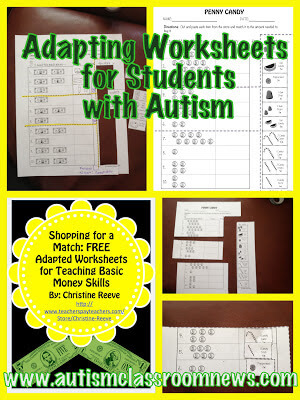
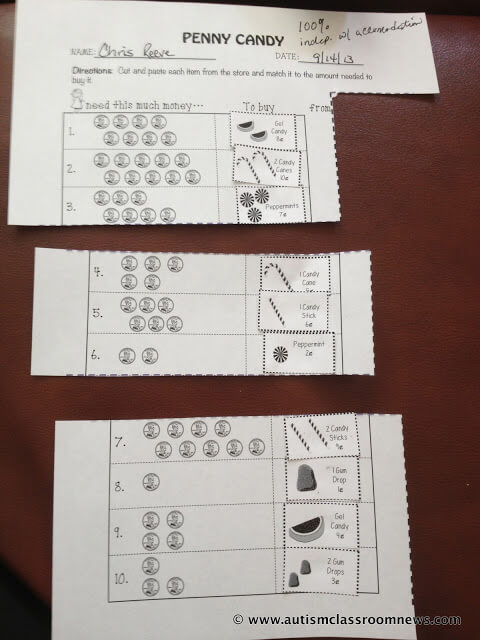
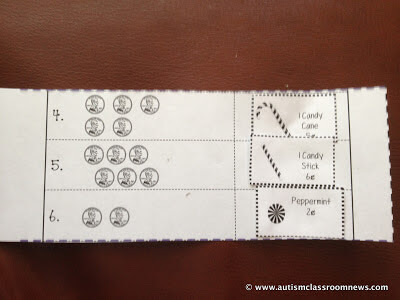
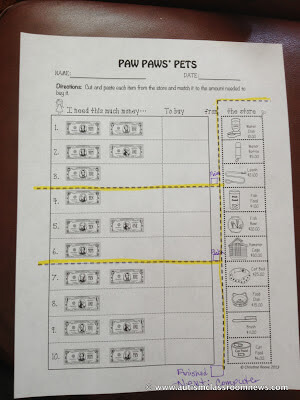







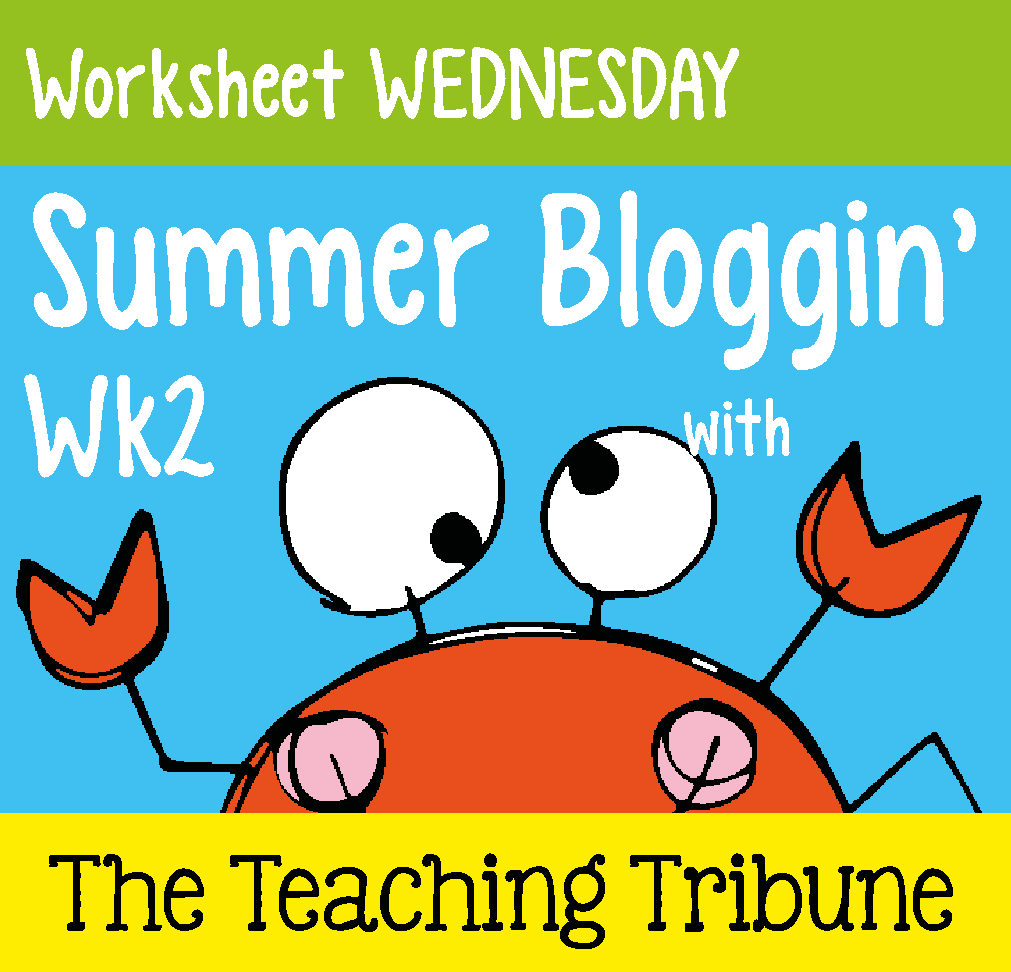


![Summer resources to help survive the end of the year in special education [picture-interactive books with summer themes]](https://autismclassroomresources.com/wp-content/uploads/2018/05/SUMMER-RESOURCES-ROUNDUP-FEATURE-8528-768x768.jpg)

